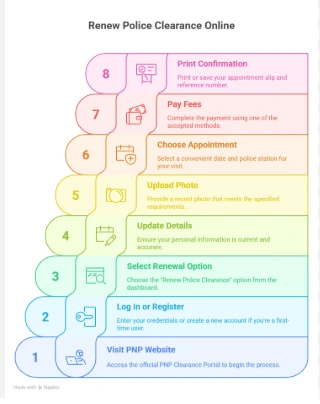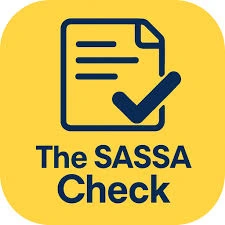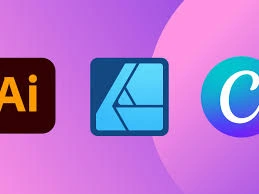Design Logos: A Complete Guide to Creating Unique Brand Identities
In the vast and noisy landscape of modern marketing, a unique logo is far more than a decorative symbol; it is the cornerstone of a brand’s identity and a critical tool for effective communication. The decision to design logos with a focus on uniqueness is a strategic investment that directly impacts a company’s ability to stand out, build trust, and connect with its audience on a deeper level.
This article explores the importance of logos, the steps to create them, the tools available, common mistakes to avoid, and frequently asked questions.
Why Logos Are Important for a Brand
A logo serves as the visual identity of a business. It is often the first element that customers encounter and the one they remember most. A well-designed logo leaves a lasting impression and communicates professionalism.
Logos are important because they build trust, provide recognition, and create consistency across marketing platforms. They also help businesses establish emotional connections with customers. When you design logos with care, you create more than just a symbol; you make a strong representation of your brand’s values and story.
Types of Logos
Before beginning the design process, it is important to understand the main categories of logos.
| Type of Logo | Description | Examples |
| Wordmark | Uses text only, focusing on typography. | Google, Coca-Cola |
| Lettermark | Based on initials or abbreviations. | IBM, HBO |
| Symbol/Icon | A graphic-only representation of a brand. | Apple, Twitter |
| Combination Mark | Combines text and symbols. | Adidas, Burger King |
| Emblem | Text placed inside a shape or badge. | Starbucks, Harley-Davidson |
Choosing the right type depends on the nature of your business and the impression you want to leave.
Principles of Good Logo Design
When you design logos, several principles ensure they are effective.
- Simplicity: A simple design is easier to recognize.
- Memorability: Unique features make a logo stand out.
- Versatility: A logo should work across different platforms and sizes.
- Timelessness: Avoid trends that quickly become outdated.
- Relevance: The design should reflect your brand’s mission and values.
Step-by-Step Guide to Design Logos
Step 1: Research the Brand
The foundation of logo design lies in understanding the brand. Research the company’s vision, mission, and audience. Look at competitors’ logos to identify gaps and avoid duplication.
Step 2: Brainstorm Ideas
Sketch initial concepts on paper or digitally. Explore different fonts, colors, and shapes. Think about which design elements best capture the brand personality.
Step 3: Choose the Right Tools
There are various tools for different needs. Beginners can use online platforms, while professionals may rely on advanced software.
- Canva and Looka for beginners.
- Adobe Illustrator or CorelDRAW for professionals.
- Hiring a designer for custom, high-quality logos.
Step 4: Create Draft Versions
Develop several variations of your logo. Experiment with different layouts, color combinations, and typography styles. Compare the drafts and refine them.
Step 5: Gather Feedback
Share drafts with colleagues, friends, or target customers. Feedback ensures the design resonates with the audience.
Step 6: Finalize the Design
Choose the best version and test it in different settings. Make sure the logo looks appealing on websites, business cards, packaging, and advertisements.
Useful Tools to Design Logos
| Tool | Best For | Pricing |
| Canva | Beginners, quick designs | Free and Paid |
| Adobe Illustrator | Professionals, detailed work | Paid |
| Looka | AI-powered logo design | Paid |
| Hatchful by Shopify | Small businesses | Free |
| Figma | Collaborative design projects | Free and Paid |
Common Mistakes to Avoid
When designing a logo, certain errors can reduce its effectiveness.
- Overcomplicating the design with too many elements.
- Using multiple fonts or clashing colors.
- Copying other logos, leading to legal and branding issues.
- Ignoring scalability, making logos unreadable in small sizes.
- Designing only for digital use and forgetting print adaptability.
Benefits of Unique Logo Design
A unique and professional logo offers several benefits. It strengthens brand identity and creates recognition that lasts. It builds credibility by showing that the business is established and serious. It also boosts the effectiveness of marketing campaigns, since a recognizable logo makes advertisements more memorable. By investing in a thoughtful design, businesses save money in the long term by avoiding frequent redesigns.
FAQs on Designing Logos
1. Why is a logo important for my business?
A logo is the face of your brand and communicates professionalism, trust, and values to customers.
2. Can I design a logo myself?
Yes, online tools make it possible for anyone to create a logo. However, hiring a designer ensures originality and higher quality.
3. How much does logo design cost?
Costs vary widely. Free tools cost nothing, professional freelancers may charge $100 to $1,000, and branding agencies can charge thousands of dollars.
4. What file formats should I save my logo in?
Save your logo in multiple formats such as PNG, SVG, JPG, and PDF to ensure versatility.
5. Should logos always include color?
Not necessarily. A good logo should also be effective in black and white to ensure flexibility across platforms.
Conclusion
A logo is more than an artistic design. It is a strategic tool that defines a company’s identity and communicates its values. When you design logos with creativity and strategy, you ensure that your brand stands out, builds trust, and connects with customers on a deeper level.
By following a clear process, using the right tools, and avoiding common mistakes, businesses can create timeless logos that remain effective for years. A strong logo does not just represent your brand; it tells your story in one powerful symbol.




